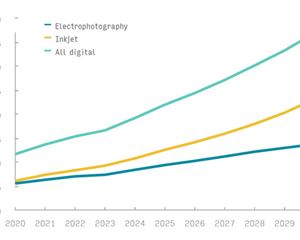I think we have already taken over the world, says Amit Ray of Uflex, arguing that in the flexible packaging segment, there are a number of companies which are exporting to countries across the world. In a conversation with Priya Raju at Indiapack, he adds that identification of the market and its opportunities and challenges is the basis for Uflex’s development and growth
Priya Raju (PR): You’ve a lot of exposure to international trends. Is the Indian printing and packaging industry ready to take on the world?
Amit Ray (AR): I think we have already taken over the world. In the flexible packaging segment, there are a number of companies which are exporting to countries across the world. We export to countries in North America and Canada, in the United Kingdom and Europe, South Africa, Middle East and Gulf countries and in South East Asia. The Indian flexible industry, with regards to technology, is totally competent like the rest of the world.
PR: Are there some trends in the more matured markets that we need to take cognisance of?
AR: Except for a few areas like the PET food packaging, the trends in the advanced countries are similar to what we see here. In this space, they have moved over from open polypropylene stitched bags to pinch button bags and heat activated sealing. As for India, I don’t think we are second to anybody, anymore, in terms of the products offered, be it product design, the quality and the print.
PR: Is product development driven by the standards that the mega brands demand?
AR: Most of the multinational brands have their presence in India. These companies have set standards for quality, food safety and hygiene. This is a good starting point. The Indian brands, too, have high demands. They state their requirements and we develop it on basis of our exposure to the countries across the world.
A point in example is the cement bag that we have developed in a way to make it weather and water proof. The development period could be as long as two years, depending on the product.
PR: A lot of work is being done in material science. What is happening in that space?
AR: Identification of the market and its opportunities and challenges is the basis for film development. Material science is fundamentally polymer-based. It is backed by the continuous development of different range of polymers. It’s a two-stage development by leaders like DuPont, Dow, etc. Our role is to identify what we require and then develop it. It is a moving milestone.
PR: You are setting up a plant in Sanand, Gujarat. Please elaborate your plans.
AR: Liquid packaging is the first but just one part of the entire set-up. The facility is ultimately going to be an industrial park – aseptic packaging and the machinery to support that, a building material unit, and a packaging unit are going to be set up there. It is for both domestic and export. We have three plants in North India and this will be our first in Western India.
PR: As the largest player in the industry, what requirement do you see in terms of formation
of policies, standards and specifications on packaging?
AR: About 15-20 years ago, the policies were government regulated. In the recent years, we and many other players have moved away. There are enormous import duties. We mean to have India as a ASEAN community member to be able to leverage the vast opportunities in those parts.
The second aspect is environment-friendliness. There are no two ways about the responsibilities of the corporates and the individuals to protect the environment. And this is a culture issue, which requires education and interaction.
The market is not the top 3%. It is the middle class, with larger disposable incomes and aspirations. They require packaging and the most economical form of packaging is flexible packaging. The plastic manufacturers and the FMCG brands should reduce the consumption of materials, reuse and recycle. They should engage with the municipality, the government and the local bodies. It is not an individual and one-day move.
PR: There is a powerful anti-plastic lobby. What is your take on this and how are you countering it?
AR: We are countering the anti-plastic lobby by partnering in industry events and forums, meeting the ministries and explaining them the processes.












 See All
See All